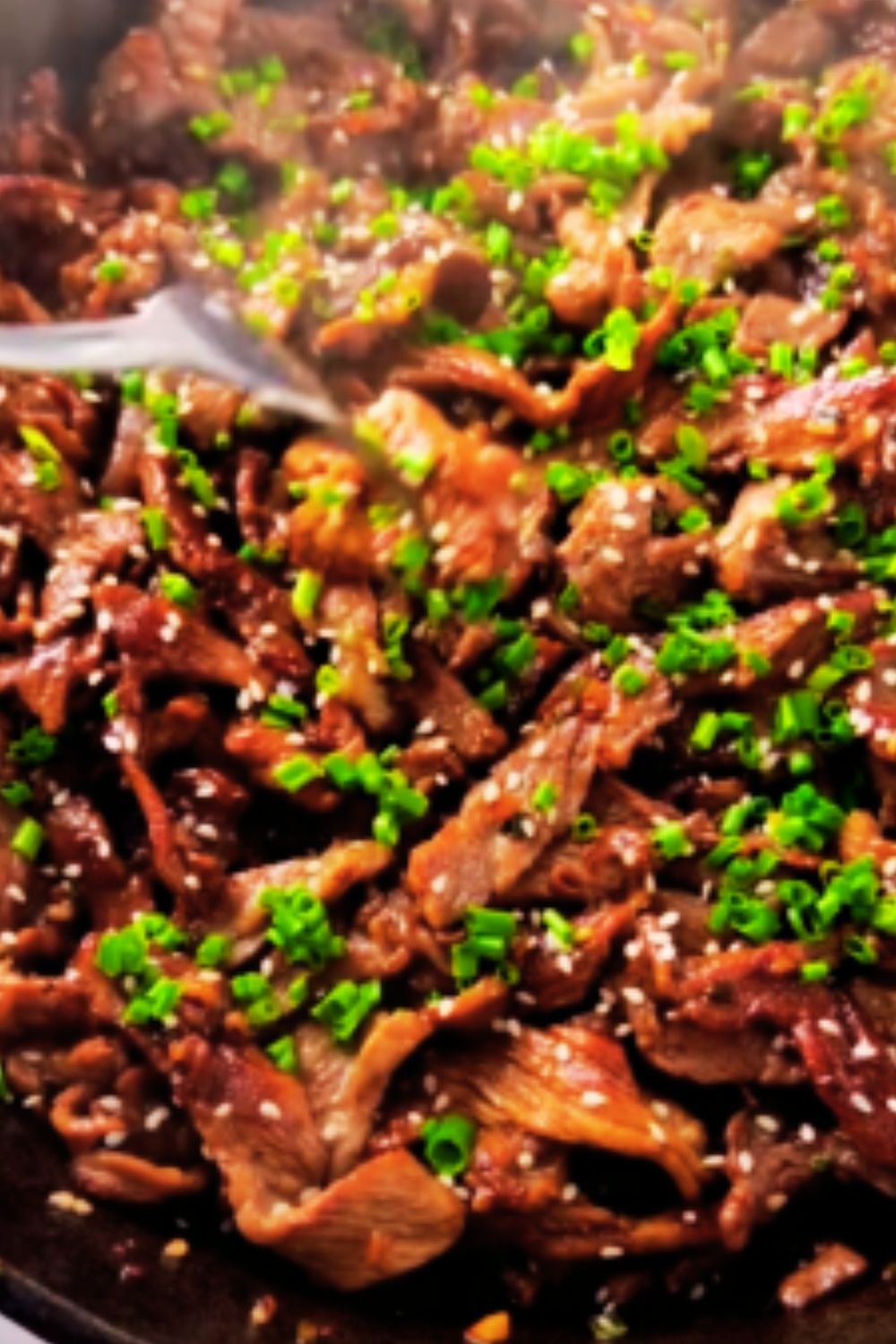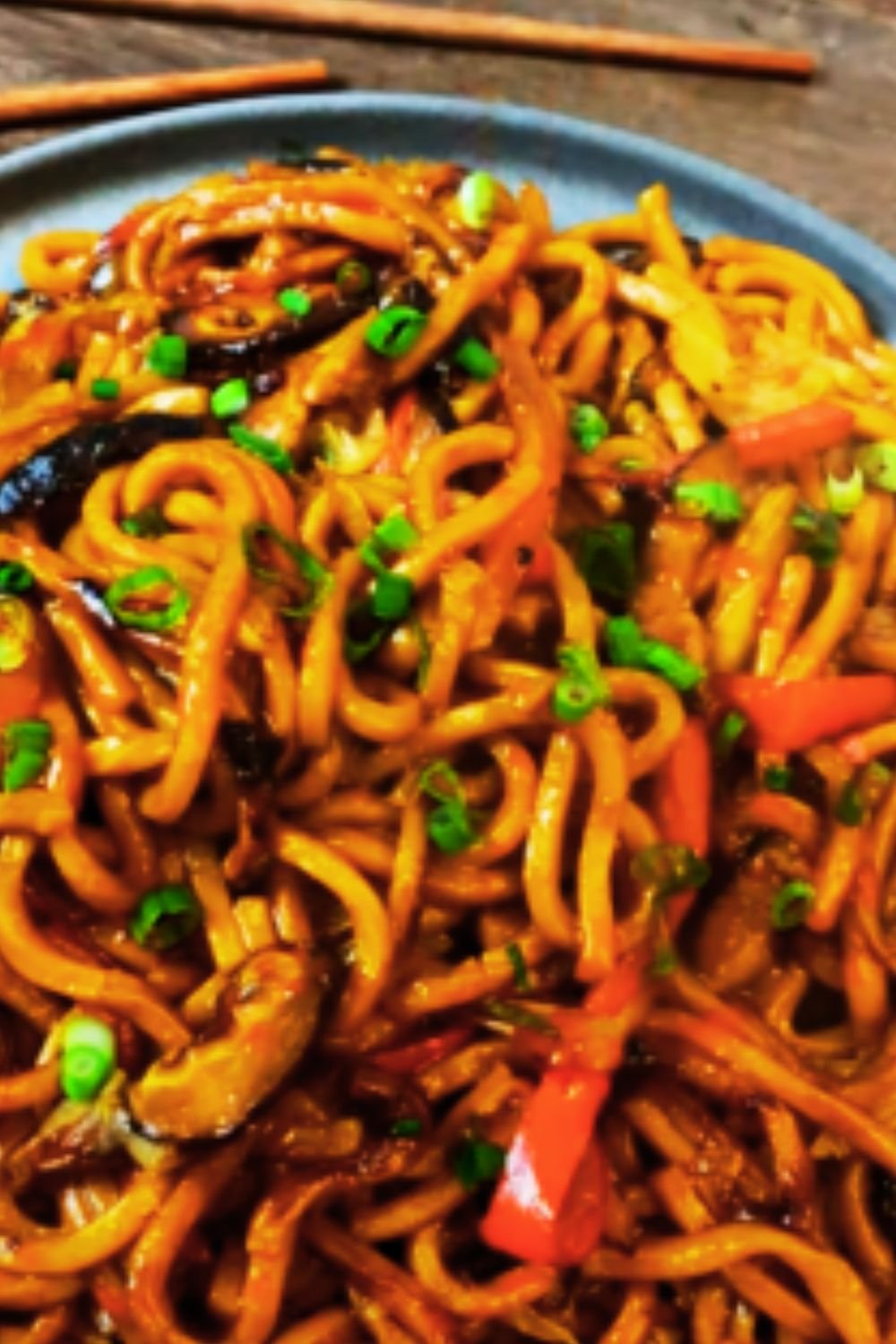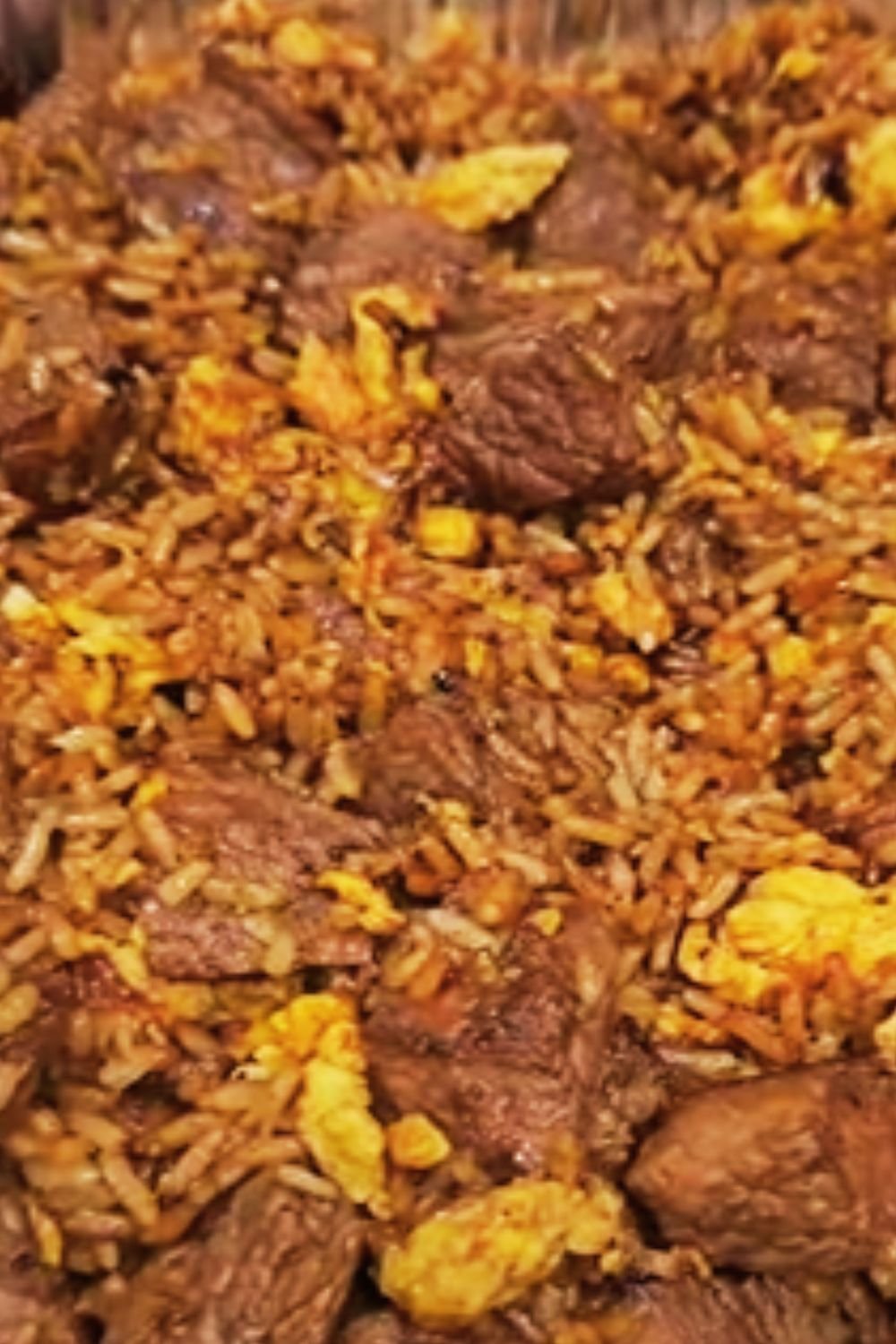Have you ever had one of those food moments that stops you in your tracks? That’s exactly what happened the first time I tried authentic Korean beef bulgogi. The tender slices of marinated beef, caramelized to perfection with that perfect balance of sweet and savory flavors, completely changed my understanding of Korean cuisine.
I’ve spent years perfecting my bulgogi recipe, traveling across Korea, and learning from local home cooks and chefs. Today, I’m sharing everything I’ve discovered about making the most authentic and delicious beef bulgogi right in your own kitchen.
What is Beef Bulgogi?
Bulgogi (불고기) literally translates to “fire meat” in Korean, referring to the traditional cooking method of grilling the meat over an open flame. This iconic Korean dish consists of thinly sliced beef marinated in a mixture of soy sauce, sugar, Asian pear, garlic, sesame oil, and other ingredients that create its distinctive sweet-savory flavor profile.
Bulgogi has a rich history dating back to the Goguryeo era (37 BCE–668 CE), though it was originally called “maekjeok.” Over centuries, it evolved into the beloved dish we know today, becoming especially popular during the 20th century. Now, it’s considered one of Korea’s most internationally recognized dishes and has been adapted in countless ways across the globe.
The Science Behind the Perfect Bulgogi Marinade
What makes bulgogi so special isn’t just its flavor—it’s the science behind the marinade. Traditional bulgogi marinades contain several key components that work together:
- Fruit enzymes: Asian pear, kiwi, or pineapple contain natural enzymes that break down tough muscle fibers, tenderizing the meat
- Sugar: Helps with caramelization and balances the saltiness
- Aromatics: Garlic, ginger, and green onions provide depth of flavor
- Umami elements: Soy sauce and sometimes mushrooms add that rich, savory quality
The marinade doesn’t just flavor the meat—it transforms it completely. When you understand these principles, you can create bulgogi that’s tender enough to melt in your mouth while still maintaining the meat’s integrity.
Essential Ingredients for Authentic Beef Bulgogi
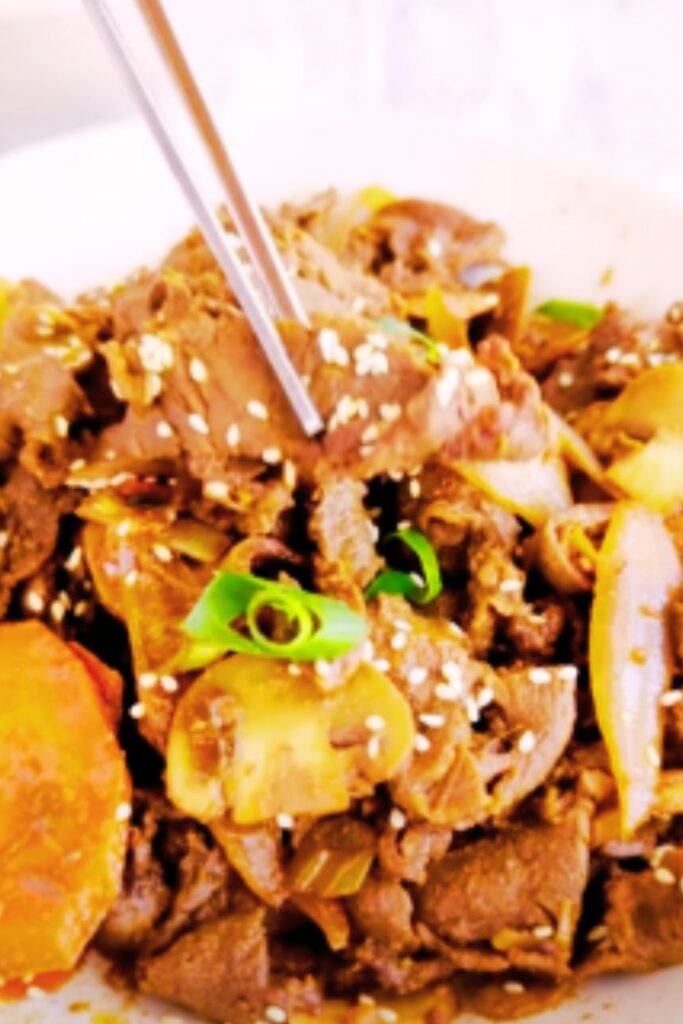
To make truly authentic bulgogi, you’ll need these key ingredients:
| Ingredient | Quantity | Purpose |
|---|---|---|
| Beef (ribeye or sirloin) | 1.5 pounds (680g) | Main protein; should be well-marbled |
| Soy sauce | 1/3 cup (80ml) | Base flavor and salt element |
| Brown sugar | 1/4 cup (50g) | Sweetness and caramelization |
| Asian pear | 1/2 medium, grated | Natural tenderizer and subtle sweetness |
| Garlic | 4-5 cloves, minced | Aromatic flavor base |
| Ginger | 1 tablespoon, minced | Aromatic with slight heat |
| Sesame oil | 2 tablespoons | Nutty flavor and richness |
| Ground black pepper | 1/2 teaspoon | Subtle heat |
| Green onions | 4, chopped | Fresh, mild onion flavor |
| Toasted sesame seeds | 1 tablespoon | Texture and nutty finish |
| Gochugaru (Korean chili flakes) | 1 teaspoon (optional) | Mild heat and color |
| Korean pear juice | 2 tablespoons (optional) | Additional tenderizing |
| Rice wine (mirin) | 2 tablespoons | Acidity and flavor enhancement |
Beef Selection: The Foundation of Great Bulgogi
The cut of beef you choose dramatically affects your final dish. While you can make bulgogi with various cuts, these are my tried-and-true recommendations:
- Ribeye: My top choice for its perfect marbling and rich flavor
- Sirloin: Leaner but still tender when properly marinated
- Tenderloin: Extremely tender but less flavorful and more expensive
- Brisket: More chew but fantastic flavor when sliced correctly
Whatever cut you choose, the key is slicing it paper-thin against the grain. In Korea, butchers often sell beef pre-sliced specifically for bulgogi. If you’re slicing it yourself, freeze the meat for about 30 minutes first to make it easier to get those thin, even slices.
The Perfect Beef Bulgogi Recipe
Now, let’s dive into my perfected bulgogi recipe that I’ve refined over years of testing and tasting.
Ingredients:
- 1.5 pounds (680g) ribeye or sirloin beef, thinly sliced
- 1/3 cup (80ml) soy sauce
- 1/4 cup (50g) brown sugar
- 1/2 Asian pear, grated
- 4 garlic cloves, minced
- 1 tablespoon fresh ginger, minced
- 2 tablespoons sesame oil
- 1/2 teaspoon ground black pepper
- 4 green onions, chopped (reserve some for garnish)
- 1 tablespoon toasted sesame seeds
- 2 tablespoons rice wine (mirin)
- 1 medium onion, thinly sliced
- 1 carrot, julienned (optional)
- 2-3 shiitake mushrooms, thinly sliced (optional)
Step-by-Step Instructions:
- Prepare the beef: If not pre-sliced, partially freeze beef for 30 minutes, then slice against the grain as thinly as possible (1/8 inch or thinner).
- Make the marinade: In a large bowl, combine soy sauce, brown sugar, grated Asian pear, minced garlic, ginger, sesame oil, black pepper, half the green onions, rice wine, and half the sesame seeds. Whisk until sugar dissolves.
- Marinate the beef: Add the sliced beef to the marinade, making sure every piece is coated. Cover and refrigerate for at least 1 hour, preferably 4 hours, or overnight for maximum flavor penetration. (I find 4 hours to be the sweet spot for flavor without over-tenderizing.)
- Prepare vegetables: While the beef marinates, slice onions, carrots, and mushrooms if using.
- Cook the bulgogi: You have several cooking options:
- Traditional grilling method: Heat a grill to high heat. Place beef slices directly on the grill or use a grill basket. Cook for 1-2 minutes per side until slightly charred.
- Pan-frying method: Heat a large cast-iron skillet or non-stick pan over high heat. Working in batches to avoid overcrowding, cook beef for 2-3 minutes, stirring occasionally, until beef is caramelized.
- Korean barbecue style: If you have a Korean barbecue grill plate, heat it and cook the meat in a single layer.
- Add vegetables: If using the pan method, you can add sliced onions, carrots, and mushrooms during the last minute of cooking.
- Garnish and serve: Sprinkle with remaining green onions and sesame seeds.
The entire cooking process should take no more than 5-7 minutes once your pan or grill is hot. The beef should be caramelized on the outside but still tender and juicy inside.
Tips for Bulgogi Success from My Kitchen to Yours
Over the years, I’ve discovered several game-changing techniques that elevate bulgogi from good to exceptional:
- Freeze meat partially before slicing: This trick makes it much easier to get those paper-thin slices that are essential for proper bulgogi.
- Don’t skimp on marination time: At least 2 hours is good, 4 hours is better, overnight is magic (but don’t go beyond 24 hours if using fruits with strong enzymes like pineapple or kiwi).
- Balance the sweet and savory: Traditional bulgogi has a distinct sweetness, but it should never be overwhelmingly sweet. Adjust sugar to your preference.
- Cook in small batches: Overcrowding the pan leads to steaming rather than caramelization. You want that beautiful browning for maximum flavor.
- High heat is essential: Whether grilling or pan-frying, make sure your cooking surface is properly heated before adding the meat.
- Save some marinade: Reserve a small portion of marinade before adding meat, then reduce it in a saucepan to make a delicious drizzling sauce for serving.
- Add vegetables strategically: Onions are traditional, but add other vegetables toward the end of cooking to maintain their texture.
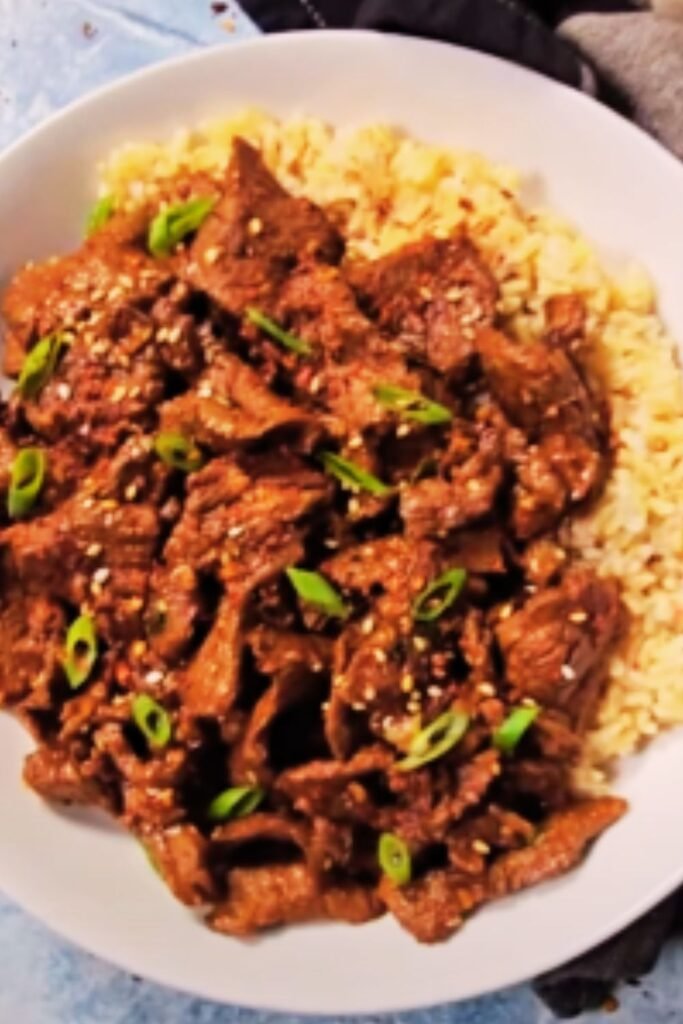
Traditional Serving Suggestions
In Korea, bulgogi is never served alone. Here’s how to create an authentic Korean meal experience:
- Steamed white rice: The perfect canvas for soaking up all those delicious juices
- Lettuce wraps (ssam): Fresh lettuce leaves to wrap the meat, creating perfect bites
- Banchan: Small side dishes that add variety and balance; kimchi is a must!
- Doenjang jjigae: A soybean paste soup that pairs wonderfully with bulgogi
- Spicy dipping sauce: Mix gochujang (Korean chili paste) with a bit of sesame oil and vinegar
Classic Banchan (Side Dishes) to Serve with Bulgogi
| Banchan | Description | Key Ingredients |
|---|---|---|
| Kimchi | Fermented napa cabbage with chili | Napa cabbage, Korean chili powder, garlic, ginger |
| Kongnamul muchim | Seasoned soybean sprouts | Bean sprouts, sesame oil, garlic, green onions |
| Gamja jorim | Braised potatoes | Baby potatoes, soy sauce, sugar, garlic |
| Sigeumchi namul | Seasoned spinach | Spinach, sesame oil, garlic, soy sauce |
| Oi muchim | Spicy cucumber salad | Cucumber, Korean chili flakes, vinegar, sugar |
| Gaji namul | Steamed eggplant | Japanese eggplant, sesame oil, green onions |
Modern Bulgogi Variations
While I’m a purist at heart when it comes to traditional bulgogi, I’ve discovered some delicious modern adaptations worth trying:
Bulgogi Bowls
Layer rice, bulgogi, fresh vegetables like cucumber and radish, a fried egg, and gochujang sauce for a complete meal in one bowl.
Bulgogi Tacos
Fill soft corn tortillas with bulgogi, top with quick-pickled red onions, cilantro, and a lime crema for a Korean-Mexican fusion that works surprisingly well.
Bulgogi Jeongol (Hot Pot)
Create a communal dish by cooking bulgogi in a shallow pot with vegetables, clear noodles, and broth at the table.
Bulgogi Kimbap
Use bulgogi as the protein in kimbap (Korean seaweed rice rolls) for an upgrade to this portable meal.
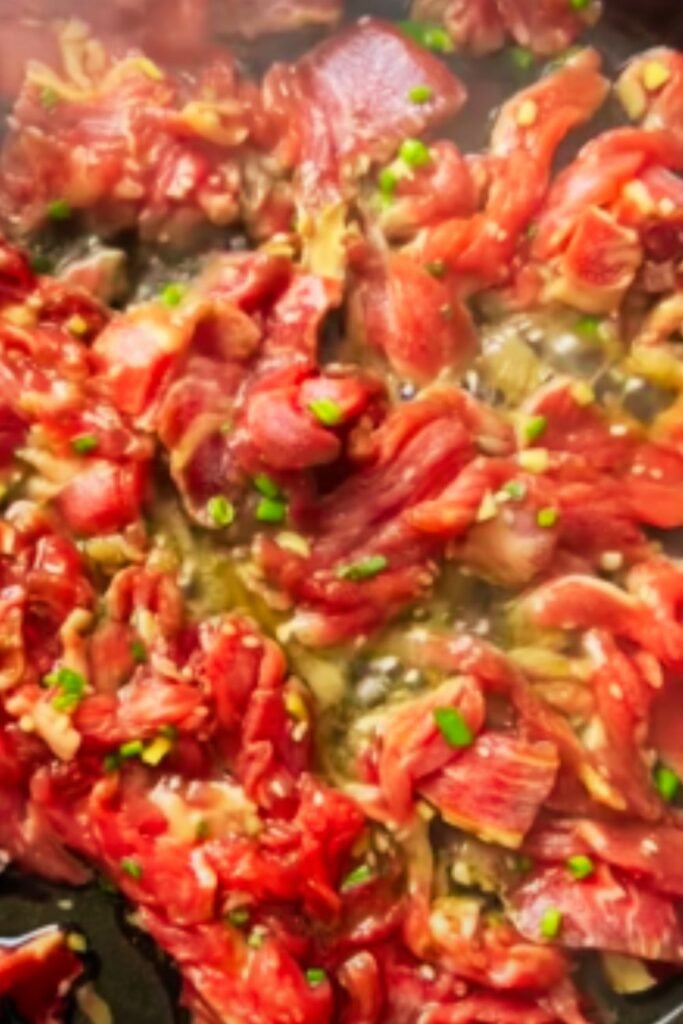
Common Mistakes to Avoid
Even with the best intentions, there are several pitfalls that can derail your bulgogi:
- Slicing with the grain: Always slice against the grain for tenderness.
- Skipping the fruit enzyme: The Asian pear isn’t just for flavor—it’s crucial for proper tenderization.
- Cooking too long: Bulgogi should be cooked quickly over high heat—overcooking makes it tough.
- Using lean meat: Some marbling is essential for juicy, flavorful bulgogi.
- Not balancing flavors: Authentic bulgogi has a complex profile with sweet, savory, and umami notes in perfect harmony.
- Using cold meat: Always let marinated meat come to room temperature for about 30 minutes before cooking for even results.
- Adding too much liquid during cooking: This creates steam and prevents proper caramelization.
Health Benefits of Korean Bulgogi
Bulgogi isn’t just delicious—it can be part of a healthy diet when prepared thoughtfully:
- Protein-rich: Beef provides complete proteins essential for muscle maintenance.
- Balanced with vegetables: Traditional accompaniments add fiber and nutrients.
- Portion control: When eaten Korean-style with multiple side dishes, you naturally eat less meat.
- Garlic and ginger: Both have antimicrobial and anti-inflammatory properties.
- Adaptable: Can be made with leaner cuts like sirloin for a lower-fat version.
To make your bulgogi even healthier:
- Use reduced-sodium soy sauce
- Decrease sugar slightly
- Increase the vegetable-to-meat ratio
- Serve with brown rice instead of white
Storing and Reheating Leftover Bulgogi
One of the beautiful things about bulgogi is that it often tastes even better the next day as the flavors continue to develop. Here’s how to store and reheat properly:
Storage:
- Refrigerate cooked bulgogi in an airtight container for up to 3 days.
- Freeze for up to 2 months in freezer-safe bags with air removed.
- Store marinade separately in the refrigerator for up to 1 week.
Reheating:
- Stovetop method (best): Heat a lightly oiled pan over medium heat and stir-fry for 2-3 minutes until just heated through.
- Microwave method (quick): Heat in 30-second intervals, stirring between each, until just warm to avoid overcooking.
- Add moisture: Sprinkle a few drops of water before reheating to maintain juiciness.
Q&A Section: Everything You Wanted to Know About Bulgogi
Q: Can I substitute the Asian pear with something else? A: Yes, you can use a regular pear, an apple, kiwi, or even pineapple. Each will impart a slightly different flavor, but all contain enzymes that help tenderize the meat. Kiwi and pineapple are stronger tenderizers, so reduce marination time if using these.
Q: Is bulgogi always made with beef? A: Traditionally, yes. However, there are variations like dwaeji bulgogi (made with pork) and dak bulgogi (made with chicken). These versions have different flavor profiles but use similar cooking techniques.
Q: My beef turned out tough. What went wrong? A: There are several possible reasons: you may have sliced with the grain instead of against it, used a cut with too little marbling, cooked the meat for too long, or not marinated it long enough. Also, make sure your cooking temperature is high enough for quick caramelization.
Q: How can I make vegetarian bulgogi? A: Firm tofu, seitan, or mushrooms (especially king oyster mushrooms) make excellent vegetarian alternatives. Slice them thinly and marinate as you would the beef, perhaps adding a bit of vegetable broth or mushroom powder to enhance the umami flavor.
Q: Is bulgogi spicy? A: Traditional beef bulgogi is not spicy. It has a sweet-savory profile. However, some regional variations and modern adaptations include gochujang (Korean chili paste) or gochugaru (Korean chili flakes) for heat. Pork bulgogi (dwaeji bulgogi) is typically spicier than the beef version.
Q: Can I make bulgogi in a slow cooker? A: While not traditional, you can adapt bulgogi for a slow cooker. The texture and caramelization will be different from the traditional version, but it’s convenient for serving a crowd. Cook on low for 4-5 hours, then broil the meat briefly to get some caramelization before serving.
Q: Why is my bulgogi too sweet? A: Korean cuisine often balances sweetness with other flavors, but if yours is too sweet, reduce the sugar in the marinade next time. Also, make sure you’re using regular soy sauce, not sweet soy sauce, which would add additional sweetness.
My Personal Journey with Bulgogi
The first time I attempted to make bulgogi at home, it was a disaster. The meat was tough, the flavor was off, and I almost gave up. But there’s something about this dish that kept calling me back. After dozens of attempts, conversations with Korean grandmothers, and even a cooking class in Seoul, I finally created a version that transported me straight to the streets of Korea.
What I love most about bulgogi is its ability to bring people together. In Korea, grilling meat is often a communal activity, with friends and family gathered around the table, cooking, talking, and enjoying each other’s company. I’ve recreated this experience countless times in my own home, watching as guests become active participants in the meal rather than passive diners.
Whether you’re new to Korean cuisine or a seasoned fan, I hope this guide helps you create bulgogi that sparks joy and brings a taste of Korea to your table. The techniques might take practice, but the results are absolutely worth it.
Final Thoughts: Why Bulgogi Has Stood the Test of Time
There’s a reason bulgogi has remained popular for centuries and has now captured hearts worldwide. It perfectly embodies what makes Korean cuisine special—the balance of flavors, the community-centered dining experience, and the harmonious marriage of protein and vegetables.
As you master this dish, you’ll find yourself not just cooking a meal but participating in a culinary tradition that spans generations. The sweet-savory flavors of perfectly caramelized beef, the warmth of sharing around the table, and the satisfaction of creating something authentic—these are the elements that make bulgogi more than just food. It’s an experience, a connection to culture, and hopefully, a new favorite in your cooking repertoire.
Q&A Section
Q: How thin should I slice the beef for authentic bulgogi? A: For authentic bulgogi, you should aim for slices about 1/8 inch (2-3mm) thick, or even thinner if possible. This thin slicing allows for quick cooking and maximum flavor absorption from the marinade.
Q: Can I make the marinade in advance? A: Absolutely! The marinade can be made up to a week ahead and stored in an airtight container in the refrigerator. This actually allows the flavors to meld together even better.
Q: I don’t have a grill or cast iron pan. Can I still make good bulgogi? A: Yes, any heavy-bottomed pan will work. The key is ensuring you can achieve high heat for proper caramelization. If using a non-stick pan, you might not get the same level of char, but the flavor will still be excellent.
Q: Is there a way to make this dish less sweet while still being authentic? A: Yes, traditional bulgogi does have sweetness, but you can reduce the sugar by up to half and still maintain authenticity. Some regions in Korea make less sweet versions naturally.
Q: How can I tell when the bulgogi is perfectly cooked? A: Perfectly cooked bulgogi should have caramelized edges but still be juicy inside. With very thin slices, this usually takes just 2-3 minutes total. The meat should no longer be pink but shouldn’t be cooked to the point of becoming tough.
Q: Can I add other vegetables to the dish? A: Absolutely! While onions are traditional, you can add bell peppers, carrots, zucchini, or mushrooms. Just remember to either pre-cook harder vegetables or add them before the meat so everything finishes cooking at the same time.
Q: What’s the difference between bulgogi and galbi? A: Both are marinated Korean beef dishes, but bulgogi uses thinly sliced beef (typically ribeye or sirloin), while galbi uses beef short ribs. The marinades are similar but not identical, with galbi often being slightly less sweet.
Q: Is there a shortcut to getting thinly sliced beef if I don’t want to slice it myself? A: Ask your butcher to slice beef for shabu-shabu or “Philadelphia-style” (for cheesesteaks), which will give you the thin slices needed for bulgogi. Many Asian markets also sell pre-sliced beef specifically for bulgogi or hot pot.
